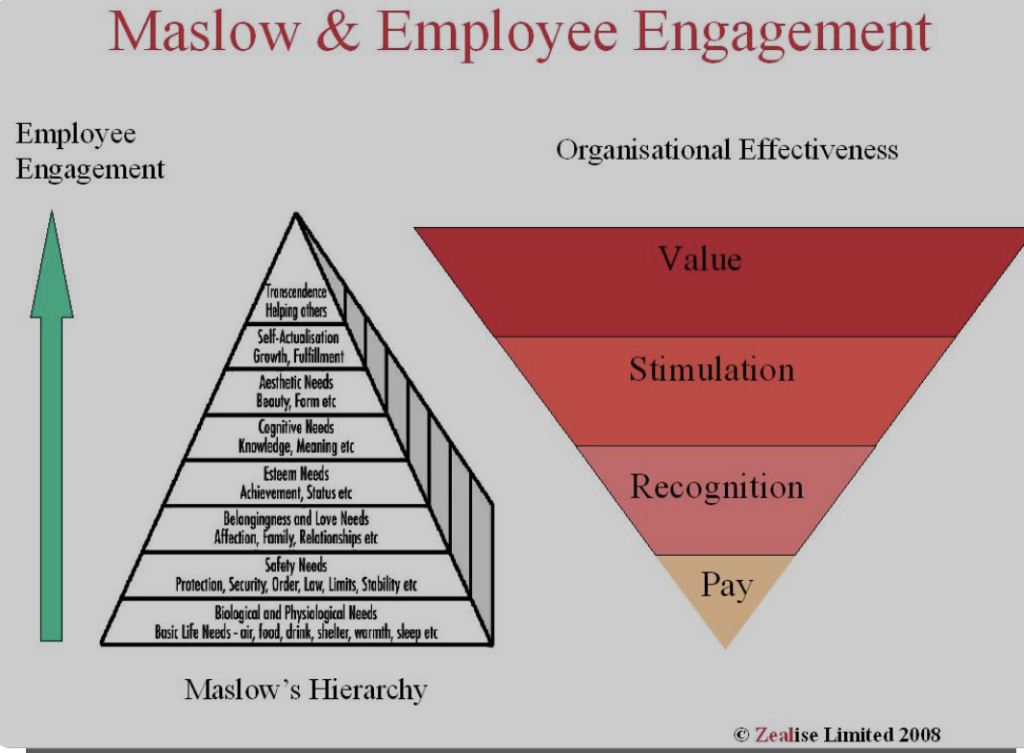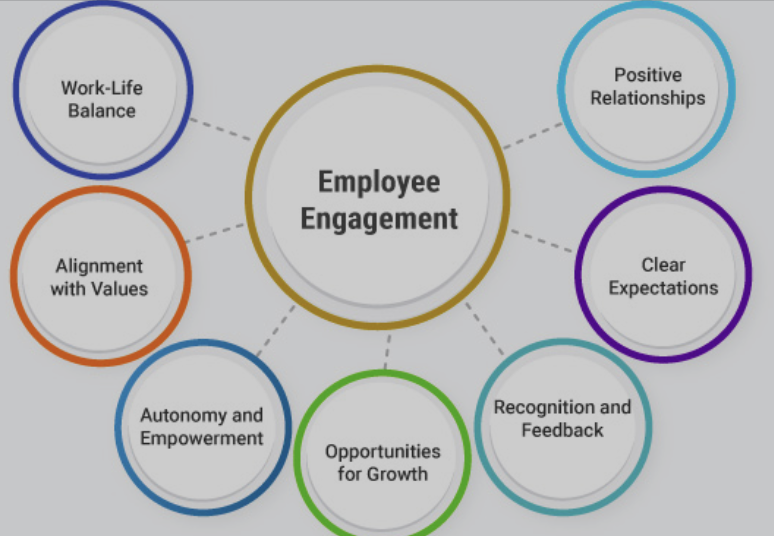
If you’ve ever worked in a job where you felt disconnected, uninspired, or just counting the hours until home time, you’ll understand why employee engagement is such a big deal. During my MSc project on employee engagement, I explored not only how important it is but also how it ties into Maslow’s Hierarchy of Needs. This framework helped me understand what really drives engagement at different levels. In this post, I’ll share some key insights I learned and why employee engagement should matter to every organisation.
What Is Employee Engagement, Really?
Employee engagement isn’t just about whether someone likes their job or feels motivated on a good day. It’s deeper than that. Engaged employees genuinely care about their work, their team, and the organisation as a whole. They’re emotionally and mentally invested. They bring more energy, creativity, and dedication to their roles than someone who’s just showing up for the pay check.
Kahn (1990) described it as when employees express themselves physically, mentally, and emotionally in their work roles. It’s not just about doing the job; it’s about caring enough to put in that extra effort because you feel connected to the bigger picture.
so… how does Maslow’s Hierarchy need tie with Employee engagement?

In my project, I linked Maslow’s Hierarchy of Needs with employee engagement. Maslow’s theory suggests that people have five levels of needs, from basic physical needs to self-actualization. Understanding this framework gives us insights into how to engage employees at different stages of their journey.
Physiological needs: At the most basic level, employees need to feel that their job provides for their essential needs—salary, job security, and a safe working environment. Without this foundation, it’s hard for employees to focus on anything else.
Safety needs: Once basic needs are met, employees want stability, both financially and in terms of job security. They also need to feel psychologically safe—comfortable to express ideas without fear of retribution.
Belongingness: Employees who feel connected to their colleagues and the organization are more engaged. This is where building a strong workplace culture comes into play. People need to feel that they belong and are part of something larger than themselves.
Esteem: Recognition and appreciation play a huge role here. Employees want to feel valued for their contributions. Providing recognition and growth opportunities taps into this need, boosting engagement.
Self-actualization: Finally, at the top of the hierarchy, employees want to reach their full potential. This is where things like professional development, creative freedom, and opportunities to innovate become important.
By understanding where an employee falls on this hierarchy, organizations can better meet their needs and foster deeper engagement. For example, an employee focused on basic needs may just be looking for stability, while someone at the self-actualization level wants new challenges and leadership opportunities.
Why Is It Important?
When employees are engaged, good things happen. Companies with high employee engagement see better productivity, higher profits, and lower turnover. If your team is engaged, they’re more likely to go above and beyond, whether it’s by offering new ideas, improving customer service, or helping their colleagues.Engaged employees also tend to stick around, which means less time and money spent on recruiting and training new staff. Plus, a motivated team creates a better atmosphere for everyone.
What Affects Engagement?
From my research, I found that employee engagement is influenced by several factors. One of the key drivers is leadership. Leaders play a critical role in setting the tone for the work environment, building trust, and supporting their team. Employees need to feel valued and aligned with the organization’s mission.Job design is also important. Employees are more engaged when their roles offer variety, autonomy, and opportunities for growth. If their work feels meaningful and aligned with their personal goals (as seen in Maslow’s esteem and self-actualization stages), they’ll be much more engaged.
How to Boost Employee Engagement
So, how can companies improve engagement? From what I’ve seen (and researched), here are a few ideas:
Support Professional Development: Offering training and career advancement shows employees that you’re invested in their growth. This taps into their esteem and self-actualization needs, which are key to long-term engagement.
Encourage Open Communication: Employees should feel comfortable sharing feedback and ideas. Leaders need to be approachable and willing to listen. Clear, honest communication fosters belonging and psychological safety.
Recognize and Reward: Recognition goes a long way. Whether it’s a shout-out in a meeting or more formal rewards, acknowledging employee contributions fulfills their esteem needs and motivates further engagement.
Focus on Work-Life Balance: Burnout is a major cause of disengagement. Offering flexible working options and promoting a healthy work-life balance helps employees feel secure and valued at all levels of the hierarchy.

To conclude, Employee engagement is more than just a trendy topic—it’s key to a thriving, productive workplace. Linking Maslow’s Hierarchy of Needs to engagement helps explain why employees at different stages have different needs, from job security to self-actualization. By addressing these needs through leadership, communication, and opportunities for growth, organizations can create an environment where employees are truly engaged. From my experience and research, I’ve seen firsthand how engagement leads to better outcomes for both employees and businesses. It’s an investment that pays off on every level.

